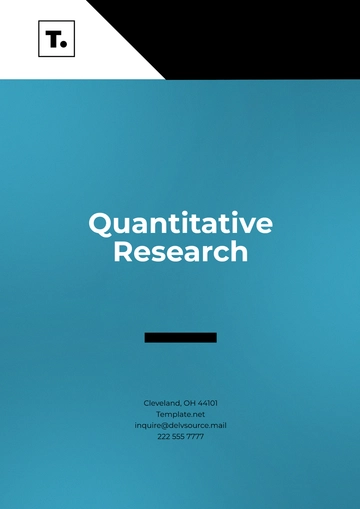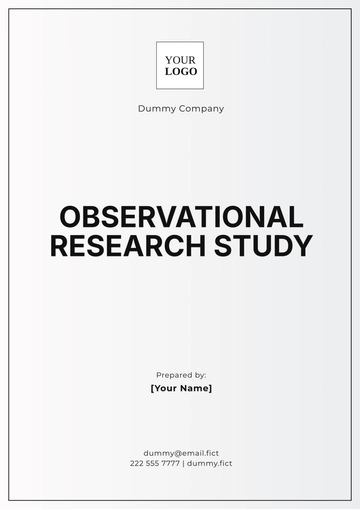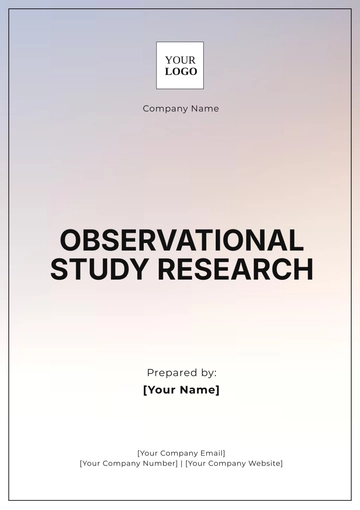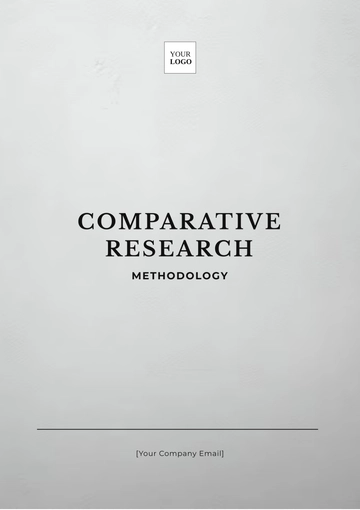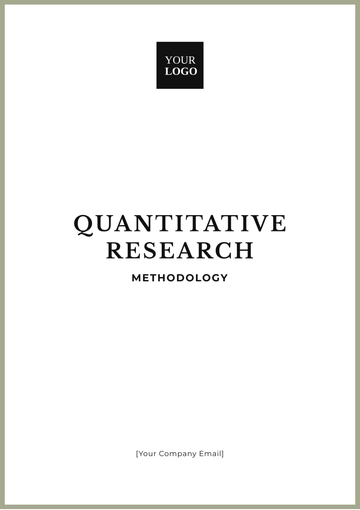Free Administration Financial Research

Introduction
This comprehensive document represents a meticulous research endeavor focused on the financial administration mechanisms within [Your Company Name]. By dissecting and analyzing various dimensions of our financial management strategies, this report aims to shed light on their efficacy and impact on the broader organizational framework. Through this investigation, we endeavor to offer insights that could significantly bolster [Your Company Name]'s financial health and operational efficiency.
Financial Environment Overview
[Your Company Name] operates in a complex financial environment influenced by both global and local economic factors. These factors include market volatility, interest and exchange rate fluctuations, economic policies, consumer behavior, and industry trends. Understanding these factors is critical for strategic planning and effectively navigating market challenges.
Global economic indicators such as GDP growth rates, inflation, and international trade agreements impact operational costs and market opportunities. Local economic conditions, regulatory frameworks, and fiscal policies directly affect business operations, influencing everything from taxation to labor costs. Technological advancements and changing consumer preferences also play a crucial role in shaping the market landscape, requiring adaptive strategies to maintain a competitive advantage.
Financial Management Practices
Budgeting
Budgeting is a fundamental aspect of [Your Company Name]'s financial management. It involves setting financial goals, forecasting future revenues and expenditures, and allocating resources accordingly. This process ensures financial stability and strategic direction, aligning financial planning with the company’s objectives.
Effective budgeting requires collaboration across departments to prioritize investments and manage resources efficiently. Incorporating flexibility into the budgeting process allows [Your Company Name] to adapt to unexpected financial challenges and opportunities, maintaining financial health and strategic agility.
Forecasting
Forecasting is essential for anticipating future financial conditions and business performance. It involves analyzing historical financial data to make informed predictions about future trends. This enables proactive management, allowing [Your Company Name] to prepare for potential challenges and seize opportunities.
Forecasting employs various models and analytics, such as time-series analysis and scenario planning, to predict financial outcomes like sales trends, cash flow, and market changes. These insights inform budget adjustments and strategic planning, ensuring alignment with growth targets and market conditions.
Reporting and Internal Controls
Financial reporting at [Your Company Name] aims to provide accurate and relevant financial information to stakeholders, enhancing transparency and trust. The internal controls system safeguards the company’s assets, prevents fraud, and ensures compliance with financial regulations and standards.
Internal controls include audit trails, segregation of duties, cybersecurity measures, and financial oversight mechanisms. These controls are regularly reviewed and updated to address technological advancements and regulatory changes, maintaining the integrity of financial operations and supporting sustainable growth.
In sum, [Your Company Name]'s financial management practices, including strategic budgeting, accurate forecasting, transparent reporting, and stringent internal controls, form the foundation of its financial strategy. These practices ensure financial health, compliance, and strategic flexibility, positioning the company for success in a dynamic and competitive market.
Efficiency Assessment
An in-depth analysis of the most recent financial data within [Your Company Name] has provided critical insights into the effectiveness of our existing financial strategies. This comprehensive evaluation scrutinizes the efficiency of our financial operations, highlighting our strengths and identifying areas where improvements are necessary. By adopting a data-driven approach, we can make well-informed decisions that significantly boost our financial performance and operational efficiency.
The analysis includes a review of key financial metrics, such as revenue growth, profit margins, cash flow stability, and capital expenditure efficiency. We also examine operational aspects like cost management, asset utilization, and investment returns. This holistic view allows us to understand how well our current financial strategies align with our overall business objectives and market dynamics.
Our assessment reveals areas where [Your Company Name] excels, demonstrating robust financial health and strategic effectiveness. However, it also uncovers areas requiring attention to mitigate risks, reduce inefficiencies, and capitalize on new opportunities. These insights are vital for refining our financial strategies and ensuring that [Your Company Name] remains competitive and financially sound.
Recommendations
Based on the insights gathered from our efficiency assessment, we propose the following strategic recommendations to enhance the financial administration of [Your Company Name]:
Enhance Forecasting Accuracy
Implement Advanced Analytics and Machine Learning Models: To improve the accuracy of our financial forecasts, we recommend adopting advanced analytics and machine learning techniques. These technologies can analyze vast amounts of data to identify patterns and predict future financial trends more accurately. By enhancing our forecasting capabilities, we can make more informed decisions about resource allocation, investment opportunities, and risk management, leading to more effective planning and improved financial outcomes.
Optimize Budget Allocation
Reassess and Realign Budget Allocations: A critical review of our current budget allocations against our strategic objectives and market conditions is essential. We suggest prioritizing investments that offer the highest returns and identifying cost-saving opportunities that do not compromise our operational effectiveness. This may involve reallocating resources to more promising areas, cutting down on non-essential expenses, and leveraging economies of scale. By optimizing our budget allocations, we can ensure that every dollar spent contributes to our strategic goals and enhances our competitive position.
Strengthen Internal Controls
Introduce More Robust Internal Controls and Compliance Mechanisms: To mitigate risks and enhance financial integrity, strengthening our internal controls and compliance frameworks is paramount. This includes conducting regular audits to ensure adherence to financial regulations and standards, updating our financial policies to reflect the latest industry best practices, and integrating cutting-edge financial management technologies. These measures will not only safeguard our assets and prevent fraud but also instill confidence among stakeholders regarding the reliability of our financial operations.
Leverage Financial Technologies
Adopt Financial Technologies (FinTech): The adoption of FinTech solutions can revolutionize our financial administration processes. Automation tools can streamline repetitive tasks, reducing errors and freeing up valuable time for strategic activities. Cloud-based financial management systems offer real-time access to financial data, enhancing transparency and decision-making efficiency. Data analytics platforms can provide deeper insights into financial performance, customer behavior, and market trends. By embracing FinTech, we can improve our reporting accuracy, increase operational efficiency, and harness the power of data to drive strategic decisions.
Implementing these recommendations requires a concerted effort across all levels of [Your Company Name]. It will involve training staff on new technologies, revising existing policies and procedures, and fostering a culture of continuous improvement. However, the benefits of enhanced financial administration—improved accuracy, efficiency, and strategic agility—will far outweigh the initial investments and efforts. By taking these steps, [Your Company Name] can strengthen its financial foundation, adapt more swiftly to changing market conditions, and position itself for sustained growth and success.
Table 1: Financial Administration Summary
To encapsulate the insights and strategic directions proposed in this document, we present the Financial Administration Summary table. This table succinctly outlines the current status of our financial management practices against the backdrop of the recommendations derived from our comprehensive analysis. It serves as a concise reference point for understanding the areas of focus within our financial administration, highlighting both our existing strengths and the opportunities for enhancement. By juxtaposing our current practices with the proposed improvements, this summary table not only underscores the necessity for evolution but also charts a clear path forward for [Your Company Name] in its pursuit of financial excellence and operational efficiency. The recommendations provided herein are aimed at fortifying our financial framework, ensuring robustness against market volatilities, and leveraging technological advancements for greater strategic agility. This table is instrumental for stakeholders at all levels to visualize the roadmap towards optimizing our financial management practices and securing a competitive edge in the dynamic business landscape.
Aspect | Current Status | Recommendation |
|---|---|---|
Budgeting | Efficient but can benefit from more dynamic planning | Adopt a more flexible budgeting approach to quickly adapt to market changes. |
Forecasting | Relies heavily on historical data | Incorporate predictive analytics and machine learning to enhance accuracy. |
Reporting | Timely and accurate but lacks advanced analytics | Implement advanced reporting tools for deeper insights. |
Internal Controls | Strong but needs updating to match new technologies | Upgrade internal controls with the latest financial management technologies. |
Conclusion
The extensive examination conducted in this report has provided valuable insights into the current state of financial administration at [Your Company Name]. By embracing the recommendations outlined, [Your Company Name] can significantly enhance its financial management practices, thereby fostering a more robust, efficient, and competitive organization. Implementing these strategies will not only safeguard the company's financial health but also position it for sustained growth and success in the dynamic business environment.
Research conducted by [YOUR NAME].
- 100% Customizable, free editor
- Access 1 Million+ Templates, photo’s & graphics
- Download or share as a template
- Click and replace photos, graphics, text, backgrounds
- Resize, crop, AI write & more
- Access advanced editor
Streamline your financial research and administration tasks effortlessly with Template.net's Administration Financial Research Template. Our AI editor tool empowers you to customize and edit this template to fit your specific needs. Save time and effort while ensuring accuracy and professionalism. Get started today and elevate your financial processes with ease!
